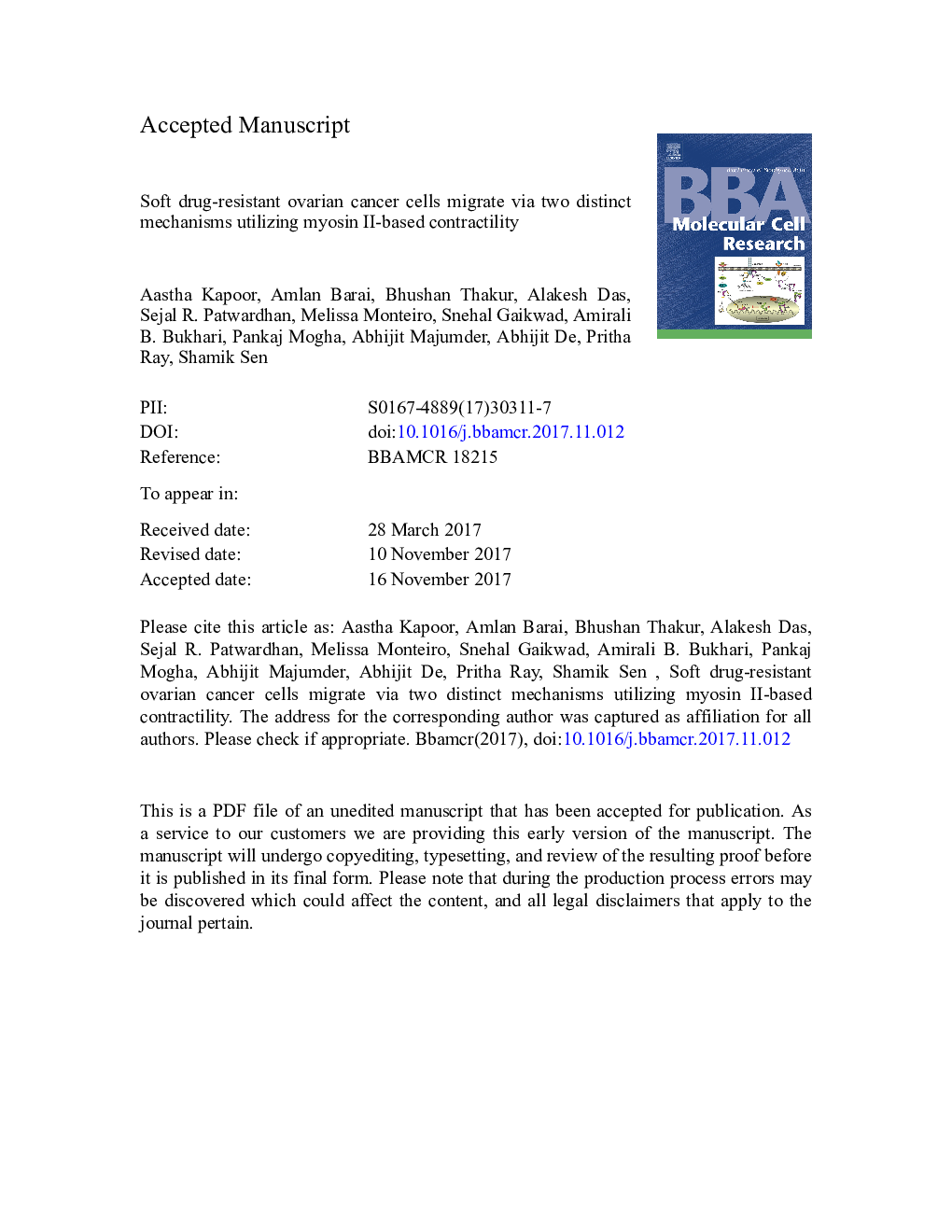| Article ID | Journal | Published Year | Pages | File Type |
|---|---|---|---|---|
| 8303735 | Biochimica et Biophysica Acta (BBA) - Molecular Cell Research | 2018 | 39 Pages |
Abstract
The failure of chemotherapeutic drugs in treatment of various cancers is attributed to the acquisition of drug resistance. However, the migration mechanisms of drug-resistant cancer cells remain incompletely understood. Here we address this question from a biophysical perspective by mapping the phenotypic alterations in ovarian cancer cells (OCCs) resistant to cisplatin and paclitaxel. We show that cisplatin-resistant (CisR), paclitaxel-resistant (PacR) and dual drug-resistant (i.e., resistant to both drugs) OCCs are more contractile and softer than drug-sensitive cells. Protease inhibition suppresses invasion of CisR cells but not of PacR cells, indicative of a protease-dependent mode of migration in CisR cells and a protease-independent mode of migration in PacR. Despite these differences, actomyosin contractility, mediated by the RhoA-ROCK2-Myosin II signaling pathway, regulates both modes of migration. Confined migration experiments establish the role of myosin IIA and IIB in mediating nuclear translocation and regulation of proteolytic activity. Collectively, our results highlight the importance of myosin II as a potential therapeutic target for treatment of drug-resistant ovarian cancer cells.
Keywords
Related Topics
Life Sciences
Biochemistry, Genetics and Molecular Biology
Biochemistry
Authors
Aastha Kapoor, Amlan Barai, Bhushan Thakur, Alakesh Das, Sejal R. Patwardhan, Melissa Monteiro, Snehal Gaikwad, Amirali B. Bukhari, Pankaj Mogha, Abhijit Majumder, Abhijit De, Pritha Ray, Shamik Sen,
